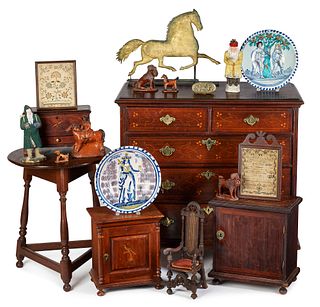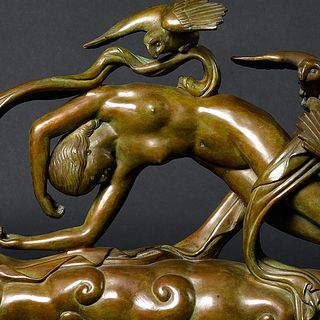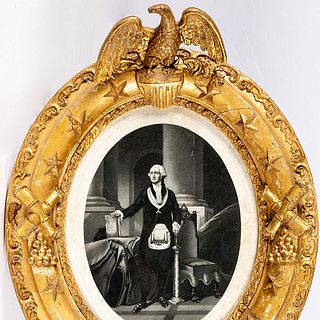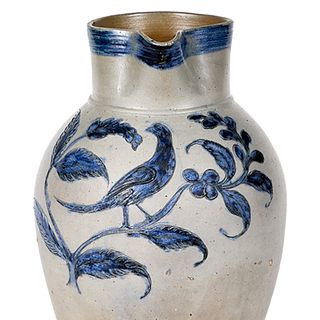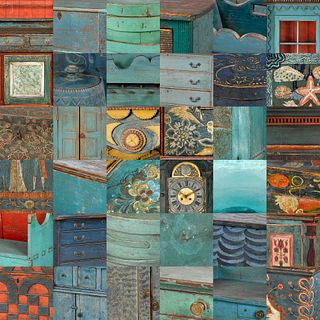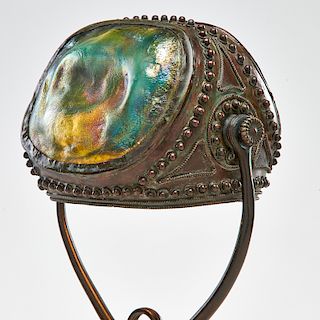Blue, blue…
…Blue, blue, electric blue
That’s the color of my room
Where I will live
Blue, blue…
The gallery at Pook & Pook this week is full of 18th and 19th century painted furniture. There are pieces in ochre, salmon, green, and red, but the ones I love are the cool blues. The words of David Bowie running through my head, I take a deep breath, relax, and take in the sight. The painted furniture, textiles, glass and mocha are an ocean of blue: robin’s egg, cobalt, aqua, teal, navy, turquoise, midnight and sky, to name a few.
Image courtesy of Pook and Pook, Inc
This is remarkable, since it was neither easy nor inexpensive to paint things blue in the 18th and 19th centuries. Paint and brushes had to be made from scratch, bristles gotten from an unwilling badger. Pigments, derived from organic sources, were ground using a hand-held stone muller against a marble slab. The finer the grind, the more saturated the paint color would be. Indigo, azurite, and expensive lapis lazuli were ground to obtain blue. Pigments were then mixed with a binder to form the paint. Linseed oil was the most common medium, followed by distemper, a binder of hide glue and water. During the Revolutionary War when linseed oil was scarce, many opted for a paint made from milk, lime, and pigment, in which casein was the binder. Milk paint was significantly cheaper than oil, and easier to make than distemper. Finally, if a paint was to be opaque, rather than a transparent varnish, a little lead would be added. For centuries, these were the methods and ingredients for the making of paint.
Lot 490, New England Chippendale painted chest of drawers. Coming up on June 25 at Pook & Pook, The Estate of Joyce Bowes Collis - Session Two
In 1706, the first modern synthetic pigment was created, Prussian blue. It was discovered accidentally by German alchemist Johan Dippel, who had been trying to transmute base metal into gold, and a painter named Diesbach. Easily made by combining oxblood, potash, and iron sulfate to create iron ferrocyanide, it became widely available by 1724. Depending how much pigment was used, the color ranged from nearly black to a bright blue with a greenish tint. Mixed with lead white, pale blues could be created. The pigment became very popular. George Washington painted the West Parlor of Mount Vernon Prussian blue.
Old hand-ground pigments and hand-mixed paints create interesting surfaces. The uneven distribution of pigment in the paint, and the uneven opacity and texture create a sense of depth and character. As seen in the mosaic above, no two pieces of furniture in this room are the same shade, but they are all lovely. I can imagine sitting in a room of them, surrounded by these blue sentinels of history, waiting for the gift of sound and vision.
___________________________
Browse all upcoming auctions from Pook and Pook including The Estate of Joyce Bowes Collis Session One and Two, June 24th & 25th.
Don't have a Bidsquare account? Sign up here!
Be in the know about upcoming auctions and exciting post-sale results by following us on Facebook and Instagram.
- The Artistry Beneath Your Feet: A Guide to French Art Deco Rugs
- Artist Spotlight: Marco Olivier, Emotion, Movement & Sculptural Expression
- The Timeless Allure of Cameos: Art, History & Auction Highlights
- A Buyer’s Guide to Diamonds: Understanding the 4 Cs
- Artist Spotlight: KAWS, A Contemporary Icon of Street Art and Collecting
- The Golden Art of Ormolu: A History of Gilded Brilliance
- Winter Landscapes, Lineage & Modern Expression
- Artist Spotlight: David Gerstein, Sculptural Pop in Bold Color & Motion
- The History of Rolex Watches: Innovation, Precision, and Enduring Prestige
- Preview the December Doyle+Design Auction: A Celebration of Modern & Contemporary Mastery



 EUR
EUR CAD
CAD AUD
AUD GBP
GBP MXN
MXN HKD
HKD CNY
CNY MYR
MYR SEK
SEK SGD
SGD CHF
CHF THB
THB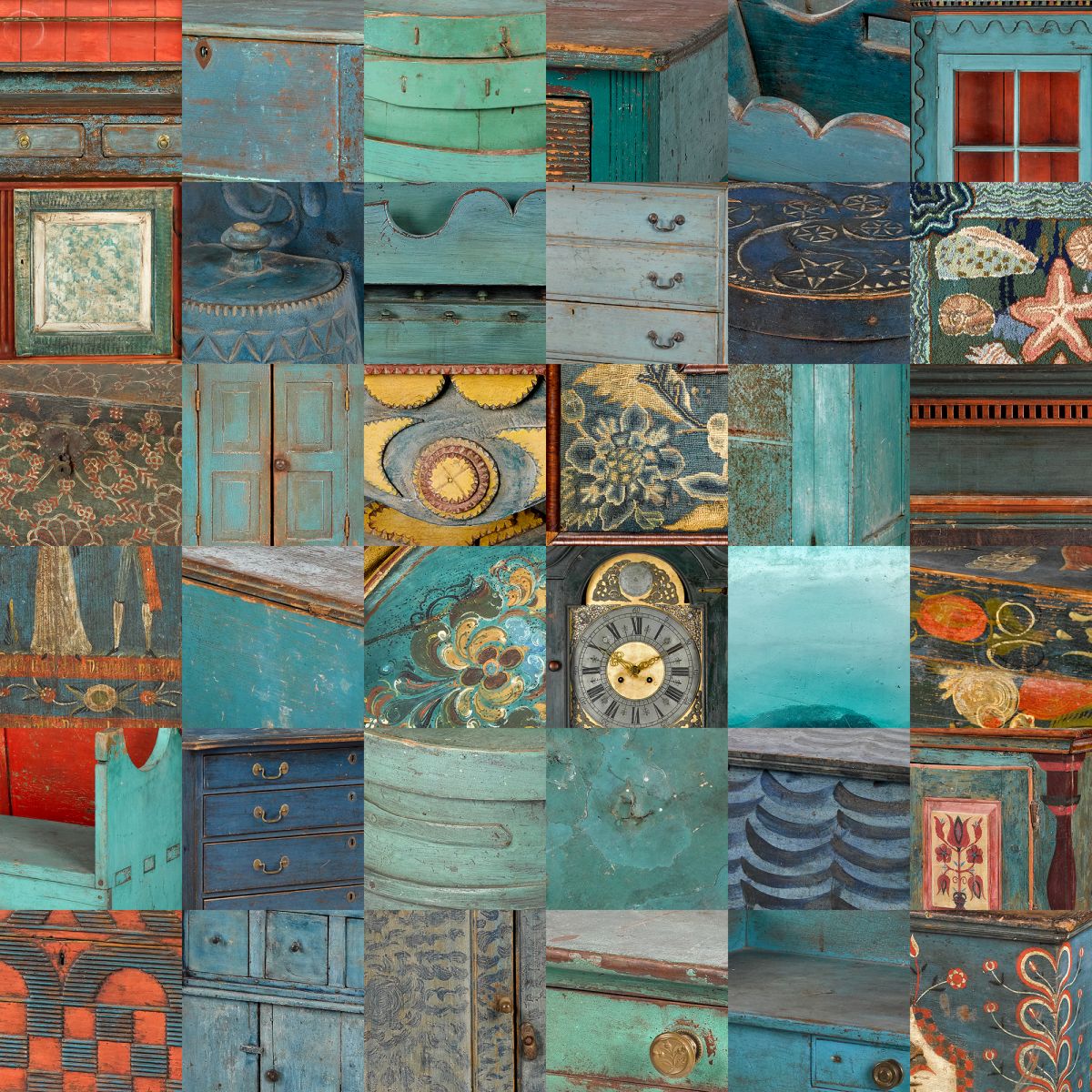
.jpg)


